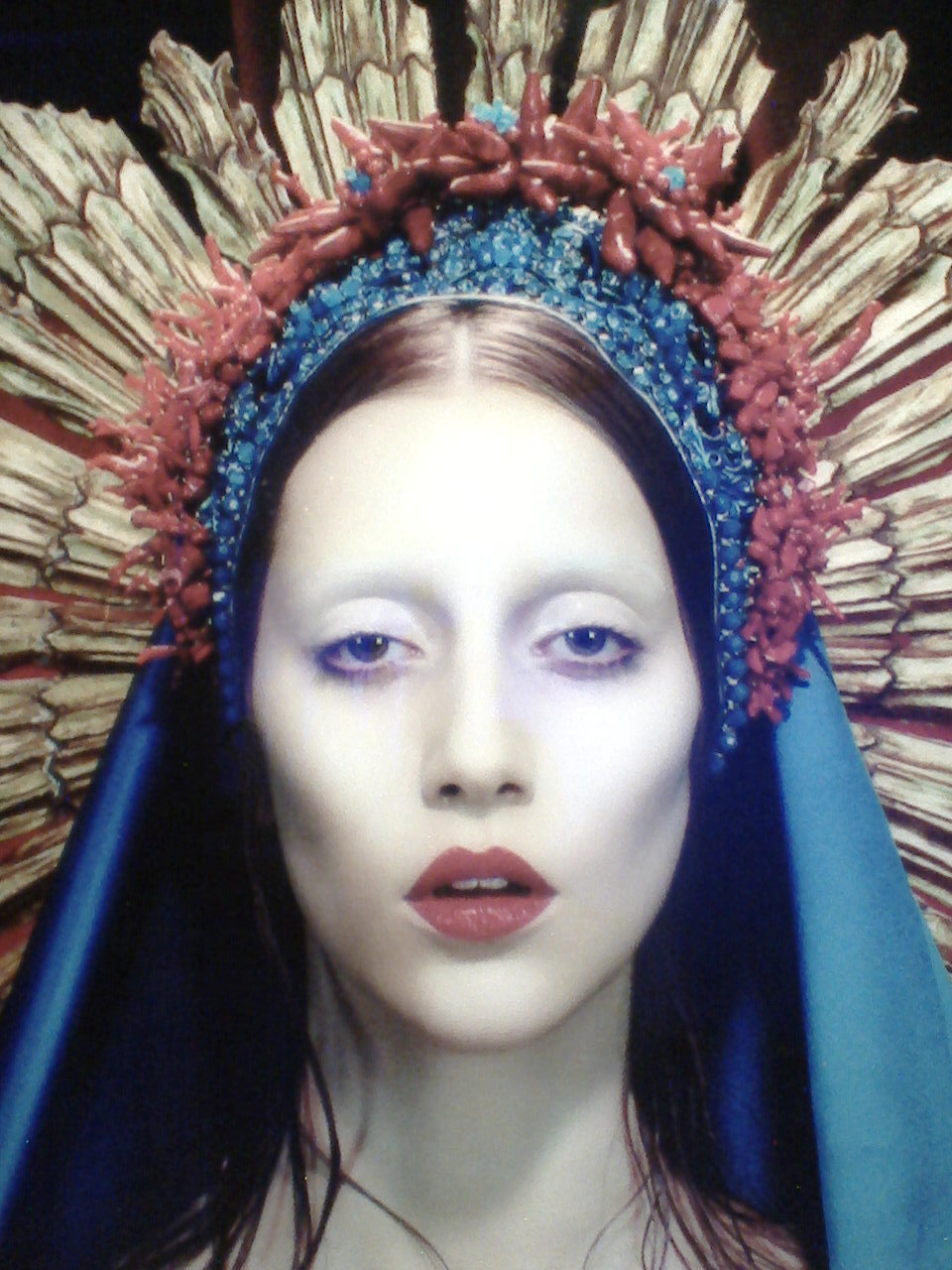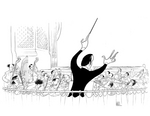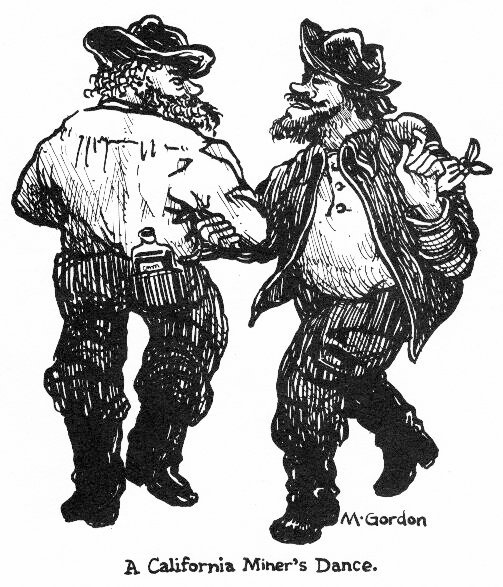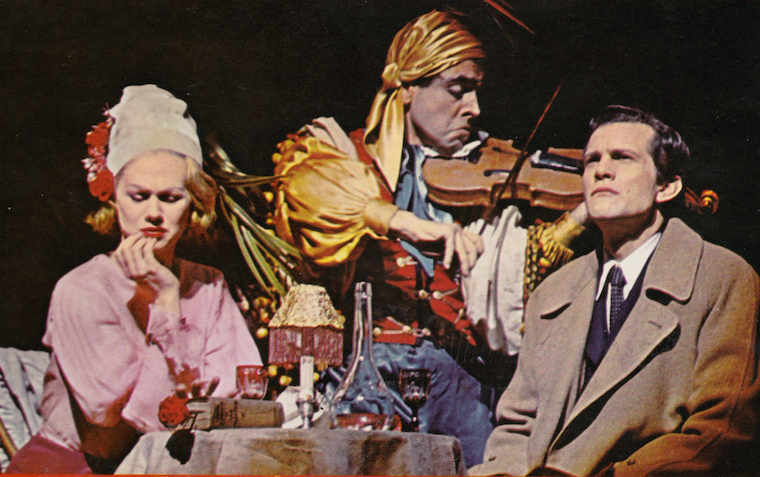Voice Amplification: a Broadway Pestilence
#1Voice Amplification: a Broadway Pestilence
Posted: 2/26/15 at 10:20am
I went with a group to see If/Then early in its run and found the story almost too confusing to try to follow. But there was Idina and that voice. Stuck up in the rear mezzanine as is usually the case with groups, I was dismayed to say the least that Idina's voice as reached us up there was severely distorted. It was almost high school dance distorted. First, she doesn't need a mike in that small theater. Second, I understand that sound engineers and other members of the crew are very well paid and I don't see how they could have allowed that poor sound. Maybe no one ever walked up to the rear balcony?
I also saw the Kelli O'Hara and Mathew Morrison holiday performance with the New York Pops at Carnegie Hall. (Actually I saw the last rehearsal and family matters made me miss the actual performance.) O'Hara in January played a role in The Merry Widow in the cavernous Met. She had generally good reviews and her opera-trained voice was said to sufficiently fill the place.
Yet at the much smaller Carnegie she was miked. And when she sang I was conscious of the artificial amplification standing between me and the pure sound of her voice.
Is amplification totally necessary at even the most intimate theaters? The Hall opened in 1891. Did all the vocalists at that time have voices like Ethel Merman?
broadwayguy2
Broadway Legend Joined: 5/18/03
#2Voice Amplification: a Broadway Pestilence
Posted: 2/26/15 at 11:21am
Yes, it is absolutely necessary and has nothing to do with a singer' straining or ability to belt and fill the space.
If you care for a list of SOME reasons, I am happy to provide.
As far as Carnegie Hall, the acoustics are different, the conditions are incredibly different, and to an extent, the audiences are different.
To speak to the quality of the design, that is an issue to take with the sound design team, not the fact that there IS a sound design.. and no, sadly. Odds are that no one went up there. Same is true of the rest of the creative team. I have attended many shows where it is absolutely apparent that no one left the tech tables in the center orchestra to consider any other POV.
EDITED TO ADD THAT ABSOLUTELY HATE AUTOCORRECT ON APPLE PRODUCTS. ![]() Updated On: 2/27/15 at 11:21 AM
Updated On: 2/27/15 at 11:21 AM
Broadway Legend Joined: 12/31/69
#2Voice Amplification: a Broadway Pestilence
Posted: 2/26/15 at 11:50amHA! Sudoku Sticks... you mean acoustics?
Pootie2
Broadway Legend Joined: 8/1/14
#3Voice Amplification: a Broadway Pestilence
Posted: 2/26/15 at 11:52am
^Oh boy, I was trying to figure out what that was!
As for the actual sound quality and distortion though, is that something that can be brought up to the house manager?
nasty_khakis
Broadway Legend Joined: 3/15/07
#4Voice Amplification: a Broadway Pestilence
Posted: 2/26/15 at 12:01pm
I always found the "kids today need to use mics, in my day we had real singers! Merm!" argument strange. (You're not making that argument, it just made me think about it.)
I mean, yes, singers of decades ago didn't use microphones or amplification. They also had to sing much louder, less naturally, and generally facing front at all times. Acting styles have changed and now a singer can sing something much softer for an emotional effect and still be heard.
Kelli was directed in the opera-style of projection/face front etc in The Merry Widow so she used those skills. The skills you use singing more broadway/pop songs in a concert venue are entirely different.
#5Voice Amplification: a Broadway Pestilence
Posted: 2/26/15 at 12:08pm
Yes, I would appreciate a few reasons.
One guess that seems likely is that if you have to mike one, you have to mike them all.
Also maybe they are needed to keep the sound uniform in all parts of the theater.
But how did they get by prior to amplification, say the Princess Theatre musicals around 1915-1920?
Thanks.
#6Voice Amplification: a Broadway Pestilence
Posted: 2/26/15 at 12:30pmWell, audiences have become used to hearing voices amplified. They don't like the tone and quality a regular voice has. When we were without mics, people put in an effort when Mary Martin sang "Cock Eyed Optimist". Sondheim and Lapine wanted Sunday in the Park to be unaligned, but Bernadette and Mandy felt their voices were dead. So, they were miced. It's just the way things are done nowadays, and it's probably not going to change unless a new Ethel comes around.
Wilmingtom
Broadway Legend Joined: 7/18/11
#7Voice Amplification: a Broadway Pestilence
Posted: 2/26/15 at 12:31pmI have done many, many musicals (Broadway, regional, tours, stock) and have never, ever been in a situation where the sound was not checked from every area of the theater, by not only the sound designer but the director, music director and producer(s) as well. So if the sound in some area is distorted, it's because of an acoustics problem that simply couldn't be fixed, not because no one bothered to check. Sometimes it has to do with the available frequencies once you've blocked out police calls, cell towers, taxi signals and so on. Another reason microphones are required is because orchestrations have changed through the years. In the old days, orchestrators wrote to support the voice while not overwhelming it. Vocals were usually scored with reeds rather than brass or percussion. Also, as older theaters and halls have been renovated through the years, the original acoustic integrity of the venues has been compromised.
#8Voice Amplification: a Broadway Pestilence
Posted: 2/26/15 at 1:45pmThanks Wilmington=you are what I love about BWW-articulate professional information.
#9Voice Amplification: a Broadway Pestilence
Posted: 2/26/15 at 1:47pmDon't forget that a lot of musicals--going back to Promises Promises and Company arguably, were written and orchestrated knowing mikes would be used. Not just rock musicals, but nowadays many scores could not be sung (with the same orchestration, in the same size theatre, etc,) without amplification. You can argue if that's good or bad, but...
AEA AGMA SM
Broadway Legend Joined: 8/13/09
#10Voice Amplification: a Broadway Pestilence
Posted: 2/26/15 at 1:53pm
You also have to take into account the use of electronic instruments (synthesizers, electric guitars and basses). Once you have to start amplifying and sending those through a sound system it becomes more necessary to start sending everything else in the orchestra through the speakers as well, or else you get the disconnect of the sounds coming from different places. That of course changes the dynamic with the cast onstage and the way the acoustics work in the theatre.
I'll also point out that everything at the Met is not completely natural. They have on occasion used body mics and have been discreetly using area mics for some time now. True it's a more subtle amplification than what we have become used to hearing in the world of musical theatre, but it's still there.
#11Voice Amplification: a Broadway Pestilence
Posted: 2/26/15 at 2:04pm
Come on, it;s just ridiculous to say that everyone sang loud and face front before the advent of amplification; the mere existence of older ballads proves that. A good orchestrator can make it possible for a trained singer to be heard over the arrangement.
The reasons amplification is used as extensively as it is today are: a) it can be, b) just about everyone under 60 is used to listening to artificially amplified music, and c) acting singers with the stamina to do 8 unamplified shows a week exist, but are very rare.
#12Voice Amplification: a Broadway Pestilence
Posted: 2/26/15 at 2:06pm
First, she doesn't need a mike in that small theater.
Years and years ago shows were orchestrated to accommodate an unmiked (spelling?) voice. Rarely did horns play when someone was singing. Today it's a different sound, rock. Idina probably could sing in that space without a microphone but the show would have to be completely re-orchestrated so she could be heard over the music. Shows are written to be amplified.
Oops: Eric, you already said basically what I'm saying. Sorry to repeat your sentiments.
Updated On: 2/26/15 at 02:06 PM
#13Voice Amplification: a Broadway Pestilence
Posted: 2/26/15 at 2:19pmI believe that Promises, Promises and Company used floor and shotgun mikes, rather than body mikes. I vastly prefer that sound (second to totally acoustic) to the processed, engineered, homogenized sound prevalent in commercial (and nonprofit) musical theatre today. It has zing, life, and spontaneity.
trpguyy
Broadway Legend Joined: 2/25/05
#14Voice Amplification: a Broadway Pestilence
Posted: 2/26/15 at 2:35pm
If you were hearing distorted audio, chances are extremely good that something was broken - either an amplifier or a speaker - and that the problem is extremely new and somehow went unnoticed during the daily system check. The issue should be brought to the attention of house management so that it can be swiftly resolved.
And I can assure you that Brian Ronan and his associates listened to the show from every area of the theater.
#15Voice Amplification: a Broadway Pestilence
Posted: 2/26/15 at 2:45pm
Kelli was directed in the opera-style of projection/face front etc in The Merry Widow so she used those skills. The skills you use singing more broadway/pop songs in a concert venue are entirely different.
Clearly there is a lot about the nuances of singing that I know nothing of. This is one of them.
But I find it hard to believe that audiences have become so familiar with amplified music that they prefer it. (Although actually I am getting near that age.) Especially in a concert setting. At the rehearsal I was only a few rows away from Kelli, who was singing the "Baby, It's Cold Outside" duet (cute duet, but every time you get a male and female on the same stage in winter you know you're going to hear it) but I clearly noticed the amplification as a barrier between her voice and my ears.
Speaking of orchestras, another thing that almost floored me was that the whole orchestra was miked at the City Center gala.
Born too late.
#16Voice Amplification: a Broadway Pestilence
Posted: 2/26/15 at 2:53pmThe extensive miking of the onstage orchestra at Encores is (in my opinion) a crying shame.
#17Voice Amplification: a Broadway Pestilence
Posted: 2/26/15 at 9:52pm
As Eric said, it isn't that audiences "prefer" electronically augmented sound, it's that miked sound is the only sound that strikes us as "natural" any more. It is what we have become used to hearing.
Even those of us over 60 haven't heard a truly acoustic sound in a large space in many decades.
And, yes, Newintown, the posters before you were correct: (1) singers--even Ethel Merman--sang almost everything (ballad or up-tempo) downstage and center before microphones; that doesn't mean they shouted ballads, but they sang them louder than singers do today. Orchestrations were written so that the accompaniment became much thinner when the singer was singing and swelled when she was not. And audiences listened better, because they were used to having to do so.
(And here in a town with a lot of hard-of-hearing, elderly people, we bring ear plugs with us whenever we attend the theater. You haven't really "heard" a show until your ears literally bleed.)
Updated On: 2/26/15 at 09:52 PM
#18Voice Amplification: a Broadway Pestilence
Posted: 2/26/15 at 9:57pm
Morosco--no worries. Great minds, bla bla ![]()
"I believe that Promises, Promises and Company used floor and shotgun mikes, rather than body mikes. I vastly prefer that sound (second to totally acoustic) to the processed, engineered, homogenized sound prevalent in commercial (and nonprofit) musical theatre today. It has zing, life, and spontaneity."
Right. Promises was the first show with a mixing board (I believe,) partly because Bacharach wanted a sound close to his studio recordings (which is also why they had offstage female backing singers--something Tunick would also, of course, bring to Company.) Of course being a perfectionist, Bacharach wasn't satisfied and aside from the stress of working on PP (which was largely due to illness--I believe on David's part--continuing to work on the West Coast, etc,) one reason he wasn't eager to go back to Broadway--despite being apparently pleased with PP--was it frustrated him that the sound wouldn't be perfect night after night.
Floor mikes were used as early as the 50s, I believe (I know we've had threads on this before.) But by the mid 60s they were pretty standard (and as was also mentioned scores started using electric instruments--Sweet Charity had electric guitar, etc.) But extensive shotgun mikes seemed to be a more late 60s thing. Hal Prince used them a lot as is talked about a bit in Everything Was Possible in regards to Follies (there too they had to pipe in the backstage tap sounds and the bits of pre-recorded singing and music in Who's That Woman and the Breakdown.)
New, I do get where you're coming from though. Body mikes do sound less natural, even at their best (and then you get some awkward shows where certain people who only have a few lines don't have body mikes, etc.)
OlBlueEyes, at various times Sondheim has said that it is true that back in the day audiences would really lean forward and pay attention--especially when sitting way back--because they had to to hear as much as possible, and that created a different kind of audience. He also has said that he's thankful for amplification because frankly, and this is paraphrasing, according to him a lot of stuff was still missed regardless and you can write more complex songs and lyrics and *know* your audience will catch it all now.
But I definitely agree with how poorly so many shows are miked. I have to see a lot of touring productions and it's usually wise to go a bit into their run since the first night or two almost always has mike problems (which of course is a problem if the show is only there for a day or two.)
#19Voice Amplification: a Broadway Pestilence
Posted: 2/26/15 at 10:25pmWasn't the PROMISES, PROMISES orchestra pit one of the first to be enclosed so that the mixer could tightly control the orchestra sound much like in a recording studio? Little to no true acoustic sound spilling out?
#20Voice Amplification: a Broadway Pestilence
Posted: 2/26/15 at 10:31pm
Anyone interested in learning more about the art, craft, and skill associated with designing and mixing the sound for a Broadway show should buy this book. Pricey but fascinating.
Mixing a Musical: Broadway Theatrical Sound Techniques
#21Voice Amplification: a Broadway Pestilence
Posted: 2/26/15 at 11:01pm
Something else to keep in mind is that the ambient noise level in a Broadway theatre has increased as technology has progressed. What I mean is now we have HVAC noise, smart lighting instruments that require internal fans to keep them cool, color scrollers in lights, mechanical winches and turntable noise... all of these create a need for amplification on a big musical. Not necessarily needed for a play but there is still an ambient sound level to contend with.
I remember when the original production of A CHORUS LINE was on Broadway the theatre turned of all of the heating/air conditioning in the theatre during the last notes of "The Music and the Mirror" in order for the theatre to be starkly quiet during Paul's monologue. After the monologue the heating and air was turned back on as the cast returned to the stage and "rehearsed" the first sequence of "One".
#22Voice Amplification: a Broadway Pestilence
Posted: 2/27/15 at 12:30am
Well, as usual, this board shows itself to be the best source of information on the Internet on all things Broadway, although it lacks a sense of humor.
I know ten times more about the subject than when I made my simple assertion.
Sondheim must be respected, all the more because his mentor Hammerstein probably experienced all the changes during his long career.
I still don't like the fact of the amplification, but it appears to be one of those many tradeoffs that must be made.
#23Voice Amplification: a Broadway Pestilence
Posted: 2/27/15 at 1:14am
Fun Fact: THE GRASS HARP was the last unmiked show. In 1971!
But you all probably knew that.
AwesomeDanny
Broadway Legend Joined: 7/30/09
#24Voice Amplification: a Broadway Pestilence
Posted: 2/27/15 at 3:43am
The most important thing is that you can hear the words. I've been to fully mic'd shows where that did not happen. There are some sound designers who are truly terrible at their jobs and pump up the orchestra over the level of the singers.
Here in Chicago, I've seen a lot of musicals without amplification in very intimate spaces where every whisper can be heard, and the result is typically nothing short of thrilling. I love seeking out smaller venues where you can hear the natural voice singing--the connection between audience and performer feels so much realer with a real human voice. And I can't think of any straight plays I have seen that have used amplification, except in specific situations to get a reverb effect or something of the like. However, as much as I love the sound of an unamplified voice, I would always rather have the voice that I can hear.









